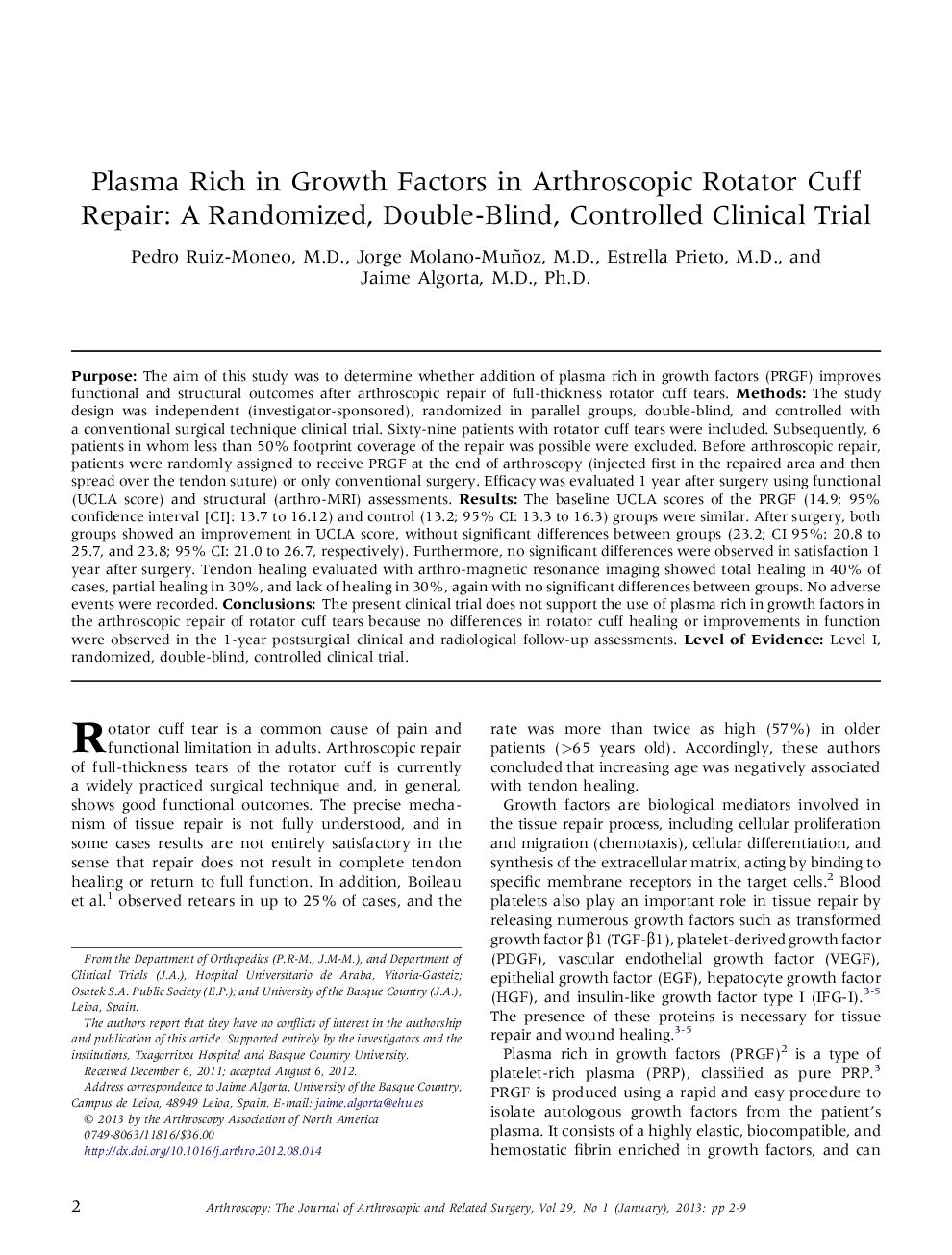| Article ID | Journal | Published Year | Pages | File Type |
|---|---|---|---|---|
| 4043955 | Arthroscopy: The Journal of Arthroscopic & Related Surgery | 2013 | 8 Pages |
PurposeThe aim of this study was to determine whether addition of plasma rich in growth factors (PRGF) improves functional and structural outcomes after arthroscopic repair of full-thickness rotator cuff tears.MethodsThe study design was independent (investigator-sponsored), randomized in parallel groups, double-blind, and controlled with a conventional surgical technique clinical trial. Sixty-nine patients with rotator cuff tears were included. Subsequently, 6 patients in whom less than 50% footprint coverage of the repair was possible were excluded. Before arthroscopic repair, patients were randomly assigned to receive PRGF at the end of arthroscopy (injected first in the repaired area and then spread over the tendon suture) or only conventional surgery. Efficacy was evaluated 1 year after surgery using functional (UCLA score) and structural (arthro-MRI) assessments.ResultsThe baseline UCLA scores of the PRGF (14.9; 95% confidence interval [CI]: 13.7 to 16.12) and control (13.2; 95% CI: 13.3 to 16.3) groups were similar. After surgery, both groups showed an improvement in UCLA score, without significant differences between groups (23.2; CI 95%: 20.8 to 25.7, and 23.8; 95% CI: 21.0 to 26.7, respectively). Furthermore, no significant differences were observed in satisfaction 1 year after surgery. Tendon healing evaluated with arthro-magnetic resonance imaging showed total healing in 40% of cases, partial healing in 30%, and lack of healing in 30%, again with no significant differences between groups. No adverse events were recorded.ConclusionsThe present clinical trial does not support the use of plasma rich in growth factors in the arthroscopic repair of rotator cuff tears because no differences in rotator cuff healing or improvements in function were observed in the 1-year postsurgical clinical and radiological follow-up assessments.Level of EvidenceLevel I, randomized, double-blind, controlled clinical trial.
